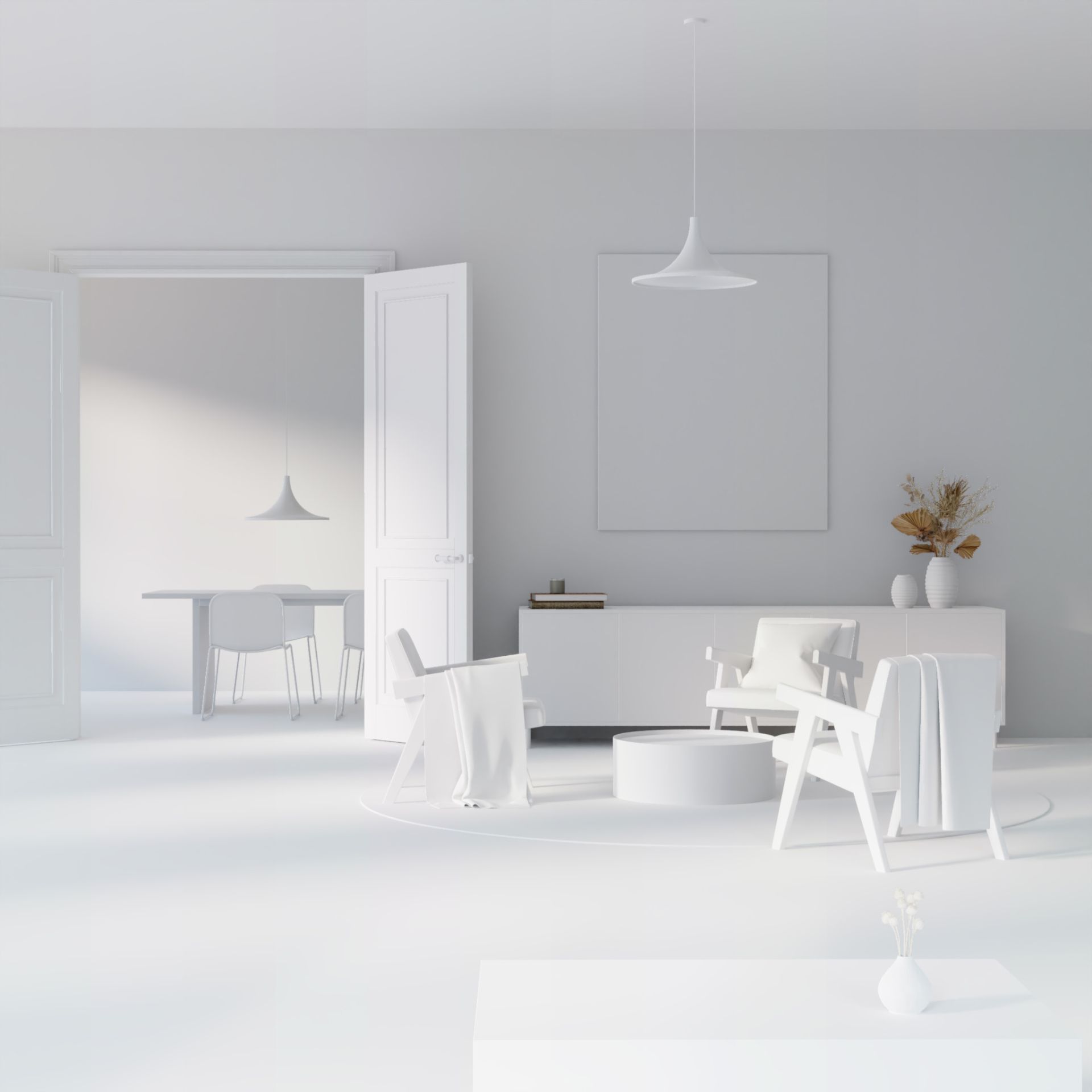Hello Class!
Accessorizing the space correctly can elevate it from boring to fabulous in a heartbeat! Although the maximalist design style tends to think “more is more”, we’re focusing on its stark opposite in this course – minimalism in all its glory. After all, once stripping everything down to the basics, it’s much easier to learn!
In the minimalist style, everything needs a place and a reason. Remember the basic rule we visited that first lesson? Form follows function, meaning, things can be both useful and beautiful!
Think of a living room – a throw blanket can add another layer of texture while also being comfortable to snuggle with in front of the TV. A scented candle can be a wonderful decorative addition while adding to the ambiance and light.
It’s important to remember that most people don’t live in empty walled minimalist mansions (unless they’re Kim K. of course!), and some emotional mementos such as personal photographs and souvenirs from around the world might make a debut here and there. It’s rare that as a Redecorator, you’ll find a client that says “I want to throw EVERYTHING I own away and start over new!” so learning how to incorporate a few “busy” accessories in the space is a must!

Here are a few tips to help you get started accessorizing like a pro:
- First, select a style for the room. An overall theme will help create a unified and harmonious design.
- Look for balance – you can choose to distribute the visual weight symmetrically across the room (a common practice in more traditional interiors) or asymmetrically (common in modern and casual interiors).
- Choose your focal point for the room. While we’re sure all the pieces you select will stand out in their own way, one feature should shine above the rest. It can be a beautiful art piece, an armchair, a window, a fireplace – you name it! It’s important to set it apart from the rest of the room with an interesting color or texture, or even the sheer scale of it.
- Keep a certain rhythm in your accessories by incorporating repeating elements around the room such as color, texture, pattern or a progression of sizes. Contrast and variety do add interest, but there should be a tying theme that’s noticeable at first glance.
- In a similar manner, make sure that the patterns you choose play off of one another. They don’t have to be “matchy matchy” but they can compliment each other through similar colors, sizes and scales. Mixing patterns isn’t always easy – don’t be disheartened! It’ll take a few insistent tries until you learn the hang of it! Don’t give up and keep trying your hand at mixing and matching, even if you’re uncertain at times.

Today’s task:
Choose the best materials and accessorize this room to perfection! If you feel there aren’t enough decor items, add more. Don’t forget to choose your focal point and keep a steady rhythm with your items!
Homework
Go to different kinds of shops or find images on the internet and pay attention to the decor items used there – how many items did they use per space, what kind of items, where and how? Is there a certain color or pattern scheme that they’re trying to follow with these accessories?
What about in homes? Do you have any decor items in your home? What do those mean to you, and why have you chosen those specific items?
Practice makes perfect:
Practice today’s lesson on the Season Pass challenge, “Lesson 5”, going live on September 12th at 10:00 AM UTC














